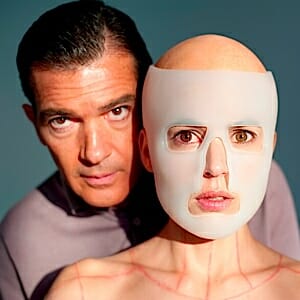The Skin I Live In

With The Skin I Live In, based on the novel Mygale by Thierry Jonquet, Pedro Almodóvar continues his career-long examination of the feminine mystique from the outside inward. In this case, that’s a good thing. The skin in question has many meanings here beyond the largest organ of the human body, though that’s certainly on ample display. In this engaging thriller, skin can refer to anything from protection, to pretension, to the last dangling thread of identity in a world that makes no sense.
Antonio Banderas plays Dr. Robert Ledgard, an accomplished and vastly wealthy plastic surgeon with a mansion in Toledo, Spain, who has its own operating room for his clients. At the beginning, we meet him in his home, along with Vera (Elena Anaya), a beautiful young woman alone in one of the mansion’s rooms, who we’re informed bears a striking resemblance to the doctor’s dead wife. With her toned physique, decked out in a beige unitard with stitchings that outline various body parts, Vera resembles a performer from Frankenstein as envisioned by Martha Graham. From the multiple security cameras pointed at her, to the copious tick marks, crowded writings, and artwork meticulously sketched on the wall, it becomes pretty clear that she’s being held captive.
-

-

-

-

-

-

-

-

-

-

-

-

-

-

-

-

-

-

-

-

-

-

-

-

-

-

-

-

-

-

-

-

-

-

-

-

-

-

-

-








































